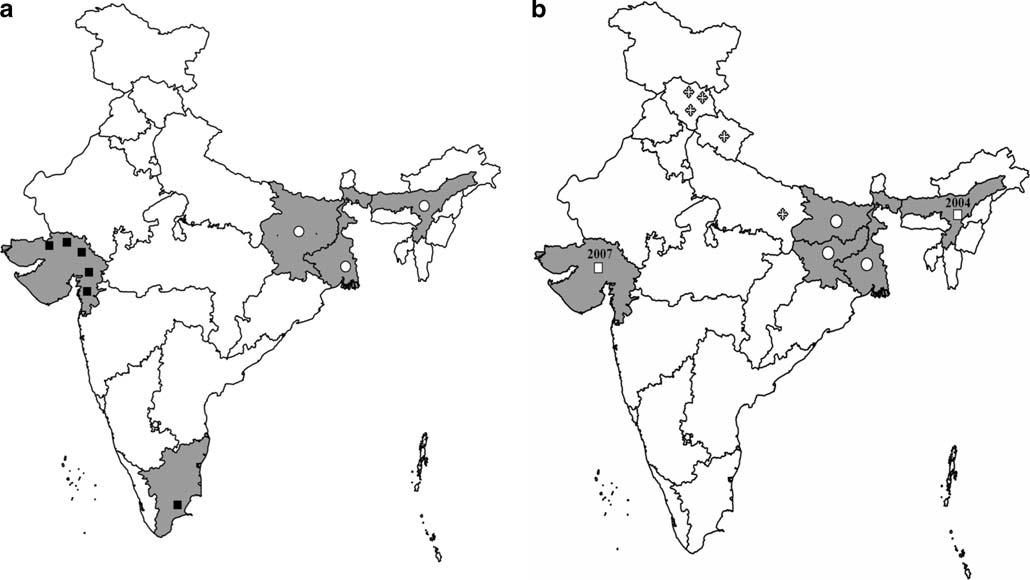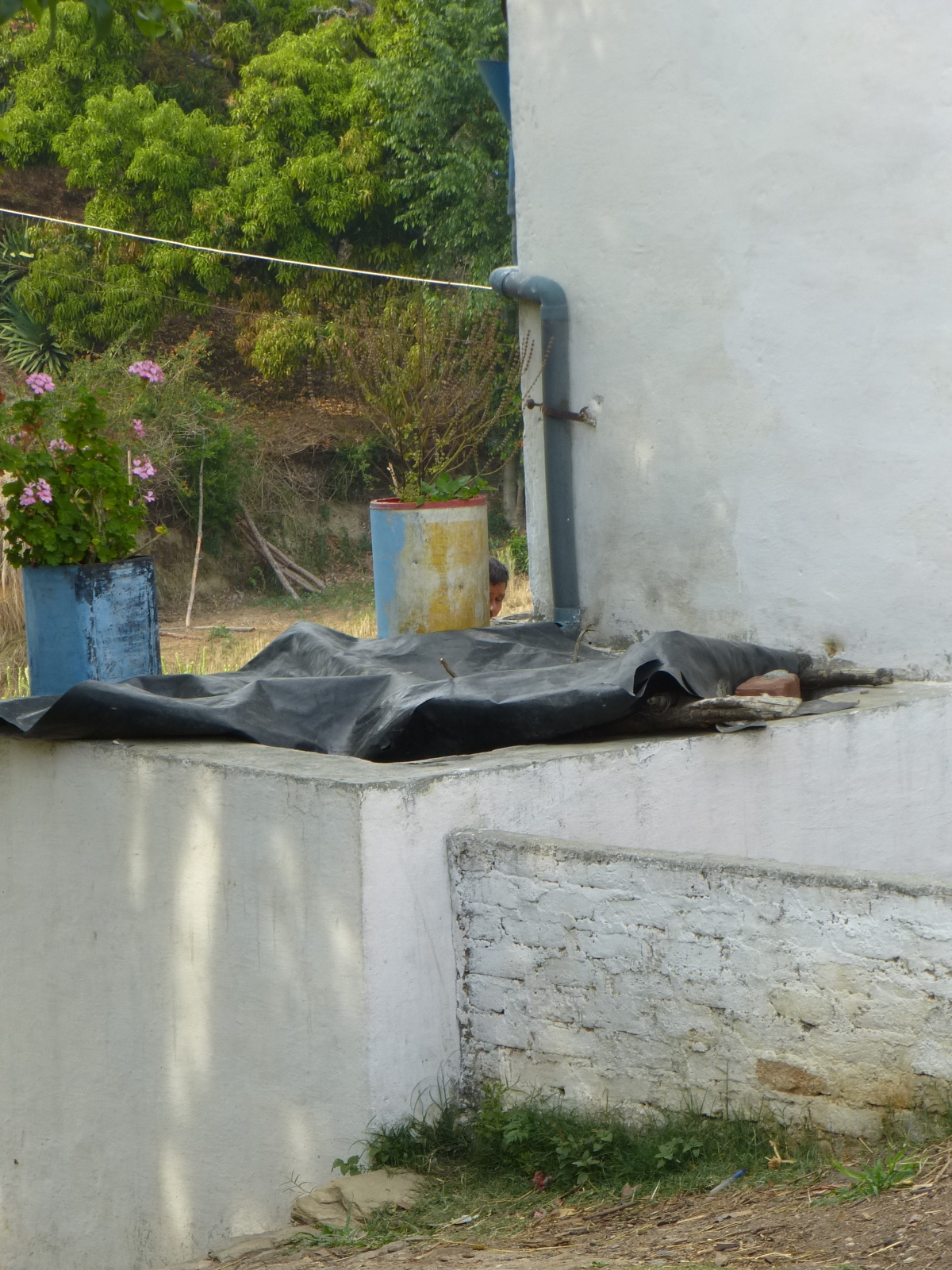We sat in a plush climate-controlled room and deliberated climate change as the outside world collapsed around us.. It could have been a scene straight out of Michael Crichton's book, 'State of Fear', where a group of renegade environmentalists engineer massive 'natural' disasters to secure funding for climate change. Only this time, the disaster was frightening and frustratingly real. I am, of course, referring to the massive floods that occurred in Uttarakhand between the 15th and-19th of June, which have left an estimated 10,000 people missing or dead.
It is against that backdrop that government officials and civil society workers from across India met in the beautiful and relatively unscathed town of Mussoorie to learn how climate change will affect their work. The goal of this workshop - organised by the National Institute of Administrative Research - was to sensitise people working in water, sanitation and hygiene to climate change and provide them with the tools they need to recognise and manage its impact. Officials from Uttarakhand were conspicuously absent, as the entire government machinery was focussed on the rescue and rehabilitation of those affected by the floods.
As if news from the outside wasn't sobering enough, what we learnt during the sessions sent a chill down our spines. Damning evidence of irrevocable climate change such as changing rainfall patterns, heavier rainfall but over fewer days and other similar manifestations were presented. What’s worse is that such patters are set to increase. We will all be at the risk of storm surges. Rising sea levels will render coastal sewage disposal systems - where sewers discharge into the sea - defunct in as little as 20 years.
Some things hit a little too close to home. Kala Azar (Visceral leishmaniasis, an often-fatal disease spread by the sandfly), was once confined to Bihar, and even there was being beaten back by a concentrated effort. Since 1982, it has cropped up in Uttarakhand and Himachal Pradesh, with the last two cases being at Garampani, a scarce 20 km from my home.
The increase in extreme weather events, climate-induced migration, and collapsing infrastructure highlighted the importance of mapping the various vulnerabilities we could be faced with. This will help adequately judge which areas will be hardest hit by climate change and help design relevant strategies to meet the crises.
These strategies need to be of two types - mitigation and adaptation.
Mitigation: This is the attempt to lessen the impacts of climate change. Possible strategies include
- decentralized waste water treatments where each household (or group of households) assumes responsibility for treating sewage and wastewater
- sanitation systems with energy, nutrient and water recovery such as bio-gas plants where sewage is regarded as a productive raw material instead of as waste
Adaptation: This is the process of learning to live with the impact of climate change. Possible strategies include planting drought-resistant crops, implementing rainwater harvesting, recycling of water, reducing physical losses in transporting water, using dry toilets in drought-hit areas, and creating elevated sludge drying beds for flood-affected areas.
 Not all the talk was gloomy. There were several discussions of state-led and community-led efforts to mitigate and adapt to climate change. Prominent among these were the efforts made by the Centre of Excellence at Tamil Nadu to bridge the gap between villagers and government officials- an attempt that resulted in water security and healed rifts in a hundred villages in the state. The attempts at reducing water logging in Gorakhpur (Uttar Pradesh) and in the Kosi Mega fan (Orissa) by Gorakhpur Environmental Action Group and the United Nations Development Program respectively used different methods towards one laudable goal. To reduce the impact of drought in Madhya Pradesh, a pilot project is working on developing methods of land management and watershed development to reduce the vulnerability of farms to drought.
Not all the talk was gloomy. There were several discussions of state-led and community-led efforts to mitigate and adapt to climate change. Prominent among these were the efforts made by the Centre of Excellence at Tamil Nadu to bridge the gap between villagers and government officials- an attempt that resulted in water security and healed rifts in a hundred villages in the state. The attempts at reducing water logging in Gorakhpur (Uttar Pradesh) and in the Kosi Mega fan (Orissa) by Gorakhpur Environmental Action Group and the United Nations Development Program respectively used different methods towards one laudable goal. To reduce the impact of drought in Madhya Pradesh, a pilot project is working on developing methods of land management and watershed development to reduce the vulnerability of farms to drought.
Later, the workshop delegates were split up into smaller groups to put some of what we learnt into practice. I was part of the group that tried to ensure water security in a fictional village. The solution? Risk diversification! We planned that the village water supply system should derive its water from multiple sources such as rainwater harvesting, tanks, and groundwater. This would ensure that even if one system failed (for example if there was no rain), the others would still work. Other groups wrestled with creating State Action Plans, using GIS for vulnerability mapping, and developing systems for managing water supply, distribution and waste disposal in an integral manner.
What do we do now?
- Don't throw away those sweaters - climate change is not only global warming. It means an increase in extreme temperatures in winter as well as summer. Along with heat waves, cold waves will increase too.
- Be ultra-conservative while siting construction - so your town/state does not have a river zonation plan that forbids construction within the river's flood area. It doesn't matter. We have seen far too many graphic images of houses bobbing downstream - don't join the regatta. Educate yourself about historical flood levels and then add a margin of safety.
- Be mindful of natural drain lines on your property - ensure they are not blocked anywhere along their length. Come waterlogging, these drain lines will be your best friends.
- Be aggressive when it comes to harvesting and recharging rainwater -given the uncertainty of the monsoons, it makes sense to store water. The collapse of the Vishnuprayag dam has taught us that large storage dams are a megalomaniac luxury we cannot afford. Decentralised storage tanks in every household achieve the same goal of water security in a much cheaper, safer, and democratic way. The bonus? Harvesting and recharging rainwater also lessens the impact of floods!
- Karma matters - every bit of energy wasted today is going to exacerbate greenhouse gas emission and therefore, climate change. Every tree lopped is going to increase temperatures, increase runoff, and so both drought and flooding. It is tough to justify chilly air conditioning and multiple printouts while fending off sharks from your bedroom because rising sea levels have caused the Indian Ocean to invade your house. (slight poetic license taken here, but the image is effective!)
- Learn about it - there is plenty of information available on climate change, its impact, its trends and strategies for mitigation and adaptation. A lot of it is on this website even. Read. Learn. Talk. The next time someone says, 'All this is just nonsense, yaar', be in a position to say, 'Well actually, no it's not. Climate change is real, and it is here.'